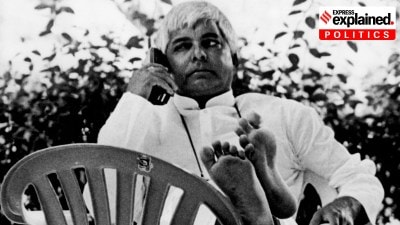Stay updated with the latest - Click here to follow us on Instagram
Art & Culture: Research shows close link between urban spaces & music they ‘inspired’
The paper attempts to capture the intimate relationships between urban spaces in the then ‘Bombay’ and now Mumbai and the music they “inspired, hosted, perpetuated and celebrated”.
 New kinds of listening experience were enabled in a proliferation of new public spaces.
New kinds of listening experience were enabled in a proliferation of new public spaces.The ‘passion’ for Hindustani music was strongly linked to the ‘linguistic diversity’ of Mumbai, which aided and fashioned the development of public spaces in the city, concludes a working paper by the Tata Institute of Social Science (TISS).
The paper, for the first time, attempts to capture the intimate relationships between urban spaces in the then ‘Bombay’ and now Mumbai and the music they “inspired, hosted, perpetuated and celebrated”. The same will be represented through an exhibition titled ‘making music, making space: Hindustani sangeet in Bombay/Mumbai’ curated by Tejaswini Niranjana, who heads the Centre for Indian Languages in Higher Education in TISS’s School of Education.
“What is today called Hindustani music began to take root in Mumbai around the 1850s and eventually became intimately associated with the city. Through the 19th century, Bombay, the city, grew in importance as a major centre of trade and commerce, and markets for entertainment as well as forms of patronage emerged. New kinds of listening experience were enabled in a proliferation of new public spaces-the Parsi theatre and the Marathi sangeet natak (musical play), the music club, the music school, the baithak in a wealthy patron’s home, the music ‘conference’, and the concert stage in places like Laxmi Baug, Brahman Sabha or Jinnah Hall in Girgaum,” says the paper by Niranjana.
[related-post]
It adds, “Musicophilia became an important facet of the metropolitan scene, and although it was not Hindustani music alone that shaped this musicophilia, it formed a significant part of it.”
The research says the very performers who had brought the music into Bombay — Muslim ustads, the tawaifs from the north, and the naikins from western India — gradually “diminished in numbers” in 20th century Bombay and only a handful survived into the 21st century. It further says that the Hindustani music audience was largely drawn from middle and lower middle classes, with occasional appearances of wealthy merchants and film stars.
The first three categories, lived in Girgaum itself, in chawls, apartments, or independent houses depending on the social stratum of the resident.
“While Girgaum was largely populated at its core by Marathi and Gujarati-speaking Hindus, there were also specific areas where Parsis lived, and Goan or north Karnataka kalavant families in Thakurdwar, as well as courtesans or tawaifs of different religious backgrounds on Grant Road and Kalbadevi Road. We also have the small artisanal shops, such as those of the tabla makers in Bhaskarbuwa Bakhle Path, where the worker-proprietor live, work, cook and eat in the same space,” says the paper.
It states that the diversity of the population is to some extent reflected in the architectural styles and ornamental details where colonial architectural repertoire met motifs and spatial arrangements were drawn from migrating communities.
The exhibition, to be held from June 15-July 7, will accordingly map spaces that supported and earned reputations for nurturing Hindustani music from 19th century onwards through architectural drawings, projection mapping of musical neighbourhoods, video installations, archival and contemporary photographs and listening stations. It includes Brahman Sabha, Laxmi Baug, Pila House area, Congress House and Jinnah Hall and Framjee Cowasjee Institute.
mihika.basu@expressindia.com







